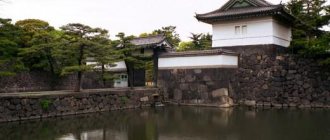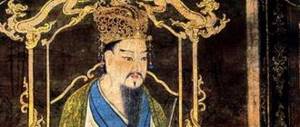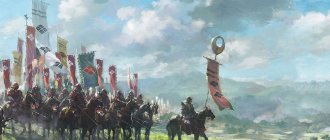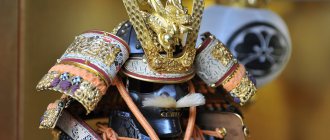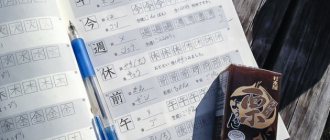Causes and spiritual basis of the Minamoto Shogunate
As you know, a society in which there is no stability craves change. In the last decades of the emperor's reign, feudal fragmentation became the main characteristic of political events in the country. The lack of centralization and unity led to severe economic consequences and frequent military riots, which only ruined the already unstable Japan. The main reasons for the change in the political system were:
- feudal fragmentation;
- lack of strong economic ties between regions;
- weakening of the emperor's power.
The first shogunate existed from 1192 to 1335. Changes in the life of the country with the increasing influence of the teachings of Zen Buddhism. This teaching gradually became widespread among military circles. It was the combination of the religious basis and military power of the samurai that led these circles to understand that they should rule the country. Samurai had a significant influence on the development of Japan.
From hostage to ruler of the Middle Kingdom
Tokugawa Ieyasu was born in 1543, his father was the ruler of the Mikawa province, Matsudaira Hirotada, who lived in Okazaki Castle. At the age of 6, he was sent as a hostage to the Oda family in Owari, and then he lived as a hostage with the daimyo of the provinces of Suruga and Totomi Imagawa Yoshimoto. During this time, his father was killed by one of the vassals, Okazaki Castle came into the actual possession of Imagawa, and Ieyasu began to fight in his army.
G. Okazaki in the prefecture Aichi, homeland of Ieyasu. On the left is Okazaki Castle, where Ieyasu was born, on the right is the statue of Ieyasu in Okazaki Park (courtesy of the Okazaki City Administration)
However, at the Battle of Okehazama, Imagawa Yoshimoto was killed, thanks to which Ieyasu decided from the Imagawa family to join forces with the ruler of Owari, Oda Nobunaga, subjugated the province of Mikawa and became one of the daimyos of the Warring States era. Subsequently, Takeda Shingen entered into an alliance with him, with whom they destroyed the Imagawa clan, and Ieyasu received the Totomi province, and then he took the Suruga province from the Takeda clan. After the Honnōji Temple incident, when Oda Nobunaga died, he captured the provinces of Kai and Shinano, the former domains of the Takeda. For some time he was at enmity with Toyotomi Hideyoshi, but later became his vassal and helped him in his administration. After the fall of the Hojo clan from Odawara, Hideyoshi sent him to rule the Kanto region, and from then on Ieyasu settled in Edo.
However, after the death of Hideyoshi, the head of the Council of Five Elders (go-tairo) Ieyasu began to arbitrarily enter into marriage alliances with other daimyo and distribute rewards, which caused discontent among others. In 1600, Ishida Mitsunari, one of the Five Governors (go-bugyo), along with Mori Terumoto, one of the Five Elders, gathered troops to finish off Ieyasu.
When the troops of the West, led by Mitsunari, met at Sekigahara with the army of the East Ieyasu, in just a few hours Ieyasu won, and the defeated Mitsunari was executed in Kyoto. After the end of hostilities, Ieyasu took possessions from 93 daimyo of the losing side with a total income of more than 5 million koku of rice (1 koku - about 180 liters), generously giving lands to the tozama daimyo who acted on his side (who became Tokugawa vassals after the Battle of Sekigahara) . However, at the same time, many of them had to change their possessions, moving to remote provinces, and shimpana (Tokugawa relatives) and fudai-daimyo (long-time Tokugawa vassals) were appointed to the regions of large cities (Edo, Osaka) and in important areas of transport routes. This was done so that the Tozama, having rebelled, could not quickly capture Osaka or Edo.
Site of the Battle of Sekigahara (PIXTA)
The Shogunate was a period of significant change in Japan
Until the beginning of the 13th century, the level of development of the country remained extremely low. This stagnation would have continued further if there had not been a change in the thinking of some representatives of the military-feudal aristocracy who came to power at the end of the 12th century.
What changes occurred after the arrival of the shoguns? Let us note that life did not immediately improve, because this is simply impossible. At that time, as now, a lot depended on trade activity. With many islands and a small land area, successful trade could only be achieved with a developed fleet. The most important achievement of the shoguns was the development of port cities and the increase in the merchant fleet. For example, in the 11th century there were only 40 more or less large cities, and already in the 16th century the number of cities approached 300.
The era of the shogunate is the flowering of crafts. As you know, in medieval Europe there were craft workshops. The craftsmen who entered the workshop could work successfully. So here, too, associations of artisans gradually began to form. The same unions were formed among representatives of trade. Obviously, it is safer to do business with partners, so the effect of the formation of such alliances was obvious.
The undoubted achievement of the era of the first shogunate was the overcoming of feudal fragmentation. The main type of land ownership in the state became small samurai plots, which they received for military service.
Tokugawa Shogunate - Briefly
Introduction
The 16th century in the history of Japan remained as a dark chapter, filled with feudal fragmentation and internecine strife. In such a situation, the emergence of a strong leader was a matter of time. Ieyasu Tokugawa
became such a leader .
The reign of the reigning dynasty was by no means short. For almost 3 centuries, the Tokugawa clan was the authoritarian ruler of Japan,
pursuing a strong internal policy aimed at the unquestioning submission of the Japanese people.
The beginning of the formation of the shogunate
Japan, weakened by civil wars, began its unification by 1600
.
,
supreme power passed into the hands of Ieyasu Tokugawa, who by 1603 completed the process of unifying the state
. Ieyasu held the title of shogun. This is the ruling rank that had actual power (unlike the emperor). During the military campaign, the new ruler conquered many peasant lands, which made him the most powerful feudal lord. Having reached the heights of power, Tokugawa did not lose his vigilance and continued to destroy all those who disagreed with his ascending regime. The Japanese Emperor remained the formal head of Japan throughout the entire period of the shogun dynasty, officially transferring the right to rule to the Tokugawa clan.
Main characteristics of the shogunate
In imposing its unquestioning power, the shogunate created a rigid system of bureaucracy.
There were two levels of management.
1st
is the supreme one.
It has the powers of a shogunate, which controls smaller feudal lords and has military power. The 2nd
is local, where local feudal lords could safely impose their positions on the citizens living on their land. The rulers of the land paid taxes to the treasury of the shogun, in exchange for which they secured his military support.
In matters of foreign policy relations, the Tokugawa clan was cautious and suspicious. This led to a policy of complete isolation of Japan from the outside world.
Trade outside the country, the entry of foreigners into Japanese lands and the departure of Japanese from the territory of the state were prohibited.
Issues of religion were of particular concern to the shoguns. Fearing Christianity, active repression was carried out against it
.
Over time, this spread to all religions except Confucianism, which was interpreted in the Japanese manner by the philosopher Zhu Xi
. This worldview was based on blind submission and faith in the rightness of the “elder,” and the opinion about the inviolability of the existing order. The successors of these ideas came to the conclusion that the Japanese were superior to other nations.
Intrusive control over all spheres of life of the population generated discontent among the masses, forcing them to increase their power and create underground movements with an ideology aimed at overthrowing the Tokugawa shogunate.
End of reign
Among the rebels were representatives of various strata of society, from ordinary peasants to intellectuals and wealthy merchants. In the 19th
century, protests against the authorities began to develop from underground to open ones, then turning into armed clashes.
So in 1863,
a civil war
began in Japan , which lasted until
1867
.
The whole society was divided into two camps. The shogunate, which was supported by part of the feudal lords, and the opposition, consisting of various social strata
.
With the support of the emperor, British and American troops were sent to help the rebellious population. Under heavy pressure, the shogunate's army retreated inland until Keiki Tokugawa, the last of the ruling dynasty, resigned and surrendered. Thus ended one of the most difficult and controversial periods in Japanese history.
Reasons for the revival of the shogunate in the 17th century
The Tokugawa shogunate is the reaction of traditional Japanese society to the events that took place in the state in the mid-second half of the 16th century. The second coming of the samurai to power had its own logical reasons:
- continuation of feudal fragmentation;
- slowdown in the country's economic development;
- the appearance of European ships and the gradual development of trade with Portugal and other European countries.
The most important and painful topic for the samurai was the appearance of foreign elements (Europeans) who came into contact with a traditional society that had been established for centuries, which had previously maintained close contacts with culturally similar China and Korea. Historians believe that the establishment of contacts with Europe became a logical impetus for intensifying the struggle for the creation of a centralized strong state.
Samurai
The Edo period is characterized by a clear division of society into classes.
The class system of this time was called Shinu Kosho and consisted of four main classes:
- these are the samurai classes;
- peasants;
- artisans;
- merchants.
For each of these classes, their position and their capabilities were clearly defined. Every part of Japanese life during this period was clearly prescribed by law.
The leading class was, naturally, the class of samurai, that is, warriors. Samurai had a huge number of privileges. As a matter of fact, an indicator of this is that only they had the opportunity to carry two swords with them everywhere in peacetime, a long and a short one. This showed that samurai had the right to punish at their discretion. In fact, this is true.
If someone from the lower classes behaved inappropriately in the presence of a samurai, then the samurai had the right to execute the offender immediately, on the spot. Samurai made up a tenth of Japan's population and were a formidable force. Terrible, especially since the bloody wars within Japan are soon ending, and the samurai have nothing to do.
Samurai are warriors, they are not adapted to peaceful life, they simply do not know how to do anything peaceful. In this regard, the samurai faced the question of how to retrain, how to find their place in a new situation. Some samurai followed the path of the ronin, that is, in fact they became mercenaries. Others opened martial arts schools and became masters of new fencing styles, including. Finally, some of the samurai retrained as officials, whom the samurai had previously despised and, in some places, even fought with them. Finally, some samurai tried to reverse the course of development of the state in such a way that the times of endless clashes within the country would return again. More than once the shoguns had to suppress samurai uprisings.
Japan in the 17th-19th centuries
The era of the shogunate is a manifestation of absolutism in Japan. Of course, we should not forget about the existence of the imperial dynasty, but the power of these persons was more spiritual than secular. The shogunate regime created a “closed” state. European ships were prohibited from entering Japanese ports. If suddenly such a ship came into port, its crew was subject to execution. This isolation lasted 250 years, until the middle of the 19th century.
If we talk briefly about the Tokugawa shogunate, then this is a period of total pressure on the peasantry. Formally, there was no corvee in the state, but many peasant lands still belonged to large feudal lords. Various taxes and levies on peasants, which were officially introduced, accounted for approximately 60% of the harvest.
Creation of a system of inheritance of power
So Tokugawa Ieyasu became the sole ruler of the country, and in 1603 received from the emperor the title seii-taishogun (“great commander who pacified the barbarians,” more often than not simply shogun), after which he officially established the government of the military class of bakufu in Edo. The forces of shimpan, fudai, jikishin (direct vassals, hatamoto and gokenin) under Ieyasu numbered more than 200,000 people, making him the undisputed military overlord.
At the same time, in creating the political system, his advisers were people who had managed the affairs of the clan since the time of his life in Mikawa, such as daimyo Honda Masanobu, the monk of the Nanzenji temple Konchiin Suden, and the Confucian Hayashi Rajan, among whom he distributed administrative responsibilities. The complex political system of the shogunate was finally formed under his grandson Iemitsu.
In 1603, Ieyasu ordered all daimyo of the country to take part in the construction work of an unprecedented scale of tenka beads, equipping Edo Castle and the surrounding areas. The filling of Hibiya Bay was carried out, creating wide dry areas, and the construction of the Onagigawa and Dosambori waterways. In addition to providing water transportation, infrastructure was created for land transport - the Five City Routes of Gokaido, starting from Nihonbashi and inns along them. As a result of these activities, by the end of Ieyasu's life, Edo had become a large city, home to several tens of thousands of people.
In 1605, just two years after receiving the title of shogun, Ieyasu ceded it to his son, and Hidetada became shogun - this was done to demonstrate the succession of the shogun title in the Tokugawa family, but Ieyasu still controlled the country's politics from his residences in Fushimi and Sumpu castles .
Estate system
The shogunate is a government system that was supposed to preserve the old traditional system. A class system was introduced in the state. The population was divided into 4 groups: peasants, artisans, samurai, merchants. The main goal of such a division: the preservation of the social structure existing at that time, when the power of the shogun and the privileged position of the samurai were to be perceived undeniably.
The merchants were considered the lowest class, but in reality they were more successful than the peasantry and artisans. Cities continued to develop. At this time, Japan already had more than 300 cities and towns. The basis for the development of cities was active trade between the islands and with nearby states (China, Korea), as well as a large number of craft associations.
The situation of artisans, merchants and peasants
The situation of merchants and artisans was even worse. Most cities belonged to either shoguns or influential princes. And in such cities, the arbitrariness of officials and samurai had no restrictions. Actually, there were not so many large shogun cities, where the situation of merchants and artisans was more or less tolerable. You can list cities such as Osako, Hokato, Kyoto, and a number of others.
The situation of the peasantry was even worse.
Ieyaso Tokugavi is credited with saying, “A peasant is like a sesame seed, the more you press, the more you squeeze out.”
His associates expressed the idea that the best way to treat a peasant is this: you have to beat out of the peasant everything that he can give, except food for himself for a year. Peasants had no rights. They were the main part of taxpayers, and the feudal lords and samurai treated them as they pleased.
